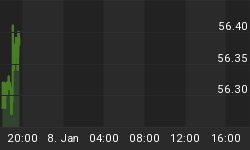We anticipate a broad sell-off in the Japanese yen accompanied by a run-up in the broad equity indices in the aftermath of Friday's payroll report as risk appetite trades are seen resurging across the board.
Trading in today's markets is proving increasingly volatile, especially with the cusp of US recession accompanied by dollar-positive whipsaws supported by sharp reductions in risk appetite. Manoeuvring during tomorrow's release of the US December jobs report could prove equally challenging, as we expect a mixed combination of results from the payrolls figure, unemployment figure and the possibility of a presidential announcement of an economic stimulus package. The conclusion of such analysis is to expect an improvement in risk appetite, meaning broad declines in the Japanese yen, and a 50% possibility of seeing downside pressure on the euro, conditional on the factors to be visited below.
Before we go over tomorrow's jobs report, it is important to remind of the reaction to last month's release of the November report, whereby markets cheered a 94K release. Although the dismal figure came in below 100K, it overshot consensus estimates of 85K. The stronger than expected 0.5% increase in average hourly earnings was also a positive for the US dollar on the interpretation that Fed would refrain from opting for the aggressive 50-bps cut option the following week. Indeed, the Fed did opt for the smaller rate cut option, only to come back and deliver massive liquidity injections along with the European Central Bank, Bank of England and Bank of Canada.
In light of today's release of the ADP report of 40K private jobs, we forecast a December payrolls figure of 70K, considering the historical relationship between ADP and the BLS figures. After closely tracking the private payrolls figure issued by the Department of Labor between July and October, the ADP report completely over estimated the November figure, when it predicted a 189K figure against an actual private payrolls figure of 64K from the Dept of Labor. We realize that the possible combinations can be daunting in determining market direction, especially when we add the unemployment rate and the element of revisions to the fray.
Rally Ahead for Yen Crosses
Our expectation is for the Japanese yen to come under pressure following the release of Friday's report due to a resurgence of risk appetite. It is unclear whether this increase in risk appetite is to take place via either of the following routes:
1) A well received non-farm payrolls report that will ease concerns of a US recession/contraction and be favorable for US stocks at the expense of the yen;
2) A dismal report such as below 10K and/or an unemployment rate of at least 4.8%, which may be contained by either an inter-meeting rate cut, or another intervention by President Bush announcing an overreaching economic stimulus package aimed at stabilizing jittery markets. We have already seen an inter-meeting Fed cut in the first week of 2001, when the central bank intervened following a dismal manufacturing ISM (formerly known as NAPM).
We also have already seen well-timed interventions from the Bush administration aimed at stabilizing market psychology, such as the recent sub-prime interest rate-freezing plan on December 6th, which boosted the S&P500 by 1.2% to 4-week high.
In conjunction with our forecast for a yen sell-off, we expect a broad rally in US equities, with the S&P500 testing the 1,470 level and the Dow at 13,250.



















